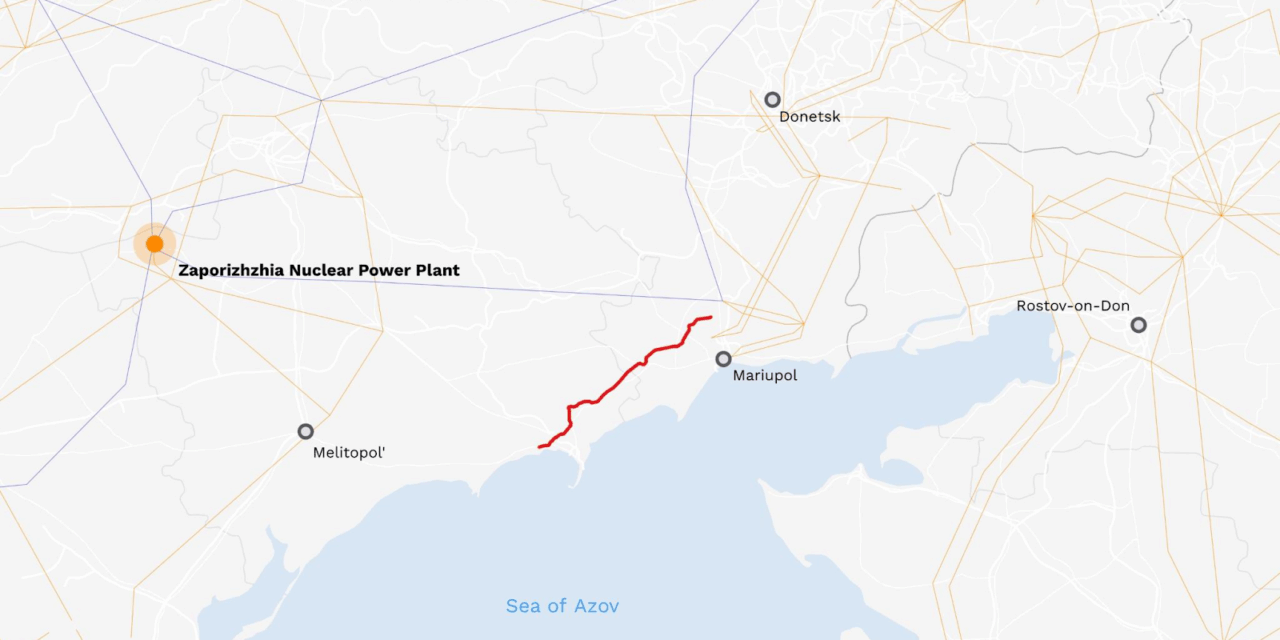Greenpeace Ukraine’s new satellite analysis alleges that Russia is quietly laying the groundwork to reconnect the seized Zaporizhzhia Nuclear Power Plant (ZNPP) to the Russian grid and prepare for a reactor restart. The investigation pinpoints active construction of a high-voltage electricity corridor across occupied parts of Zaporizhzhia and Donetsk oblasts, with work hubs west of Berdiansk and near Topolyne north of Mariupol. Analysts mapped roughly 90 kilometers of line already in place by May 23, 2025, alongside an estimated 300 pylons; fresh imagery from May 11–22 captured at least 15 more pylons and over five additional kilometers built near Topolyne, with a crossing of the Kalchytske Reservoir expected next. The work, Greenpeace argues, is concrete, on-the-ground evidence of a structured plan to flip Europe’s largest nuclear plant back on in defiance of Ukrainian sovereignty. Greenpeace
Based on the route revealed to date, Greenpeace expects the corridor to continue west roughly 100 kilometers to Melitopol to tie into a 330 kV substation, and east to a 750/330 kV substation north of Mariupol—connections that would anchor ZNPP into Russia’s Unified Energy System. Oversight is attributed to the Black Sea Regional Branch Dispatch office of Russia’s system operator (JSC SO UES), reinforcing that this is not an ad-hoc field fix but an organized grid integration project. Greenpeace
The report situates the buildout within a broader political push. ZNPP, attacked and illegally occupied on March 4, 2022, has produced no power since September 2022. Yet senior Russian officials have repeatedly trailed ambitions to restart: on December 29, 2024, Sergei Kiriyenko urged preparations for the “fastest possible” relaunch of all six units, and on May 21, 2025, Rosatom CEO Alexey Likhachev told Russia’s Federation Council they had a plan to return ZNPP to full capacity and that “everyone is living the dream” of restart. Greenpeace
Greenpeace warns that any restart under occupation would be unlawful and dangerously premature. Risks highlighted include degraded staffing and experience, higher probabilities of equipment failure and human error, and reduced grid redundancy if the plant is tied to a single external line—compounded by unresolved questions around assured cooling water supplies after the Kakhovka dam’s destruction. Even a limited restart, the group contends, would immediately elevate radiological risk by increasing short-lived isotopes such as radioactive iodine. Greenpeace calls on the IAEA to stop signaling any “legitimate pathway” for a Rosatom-led restart, to make explicit its opposition in upcoming meetings, and to back measures that sanction Rosatom and enable de-occupation so the plant can be returned to Ukrainian control.











